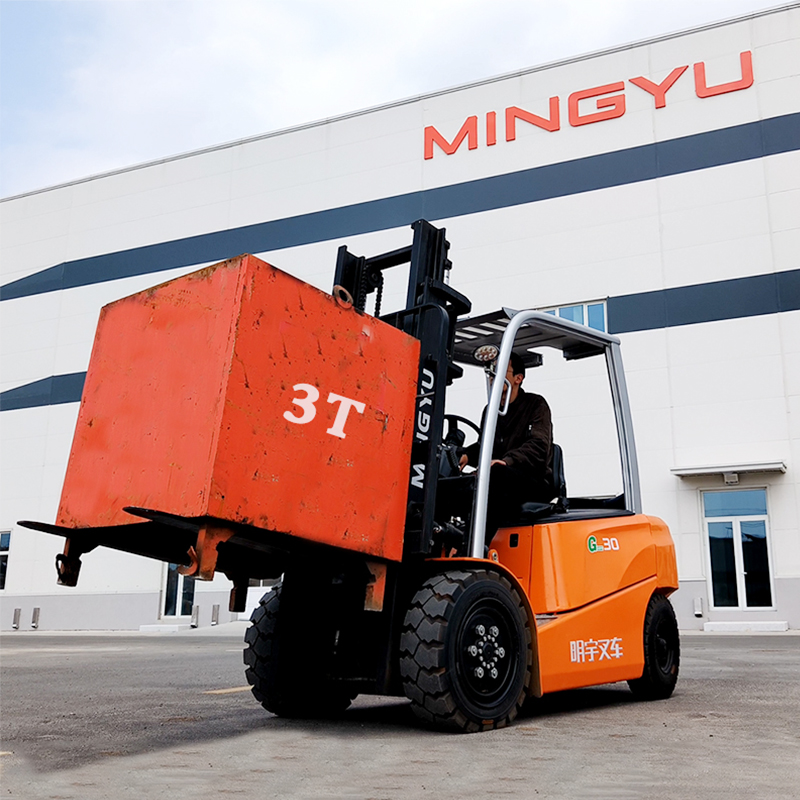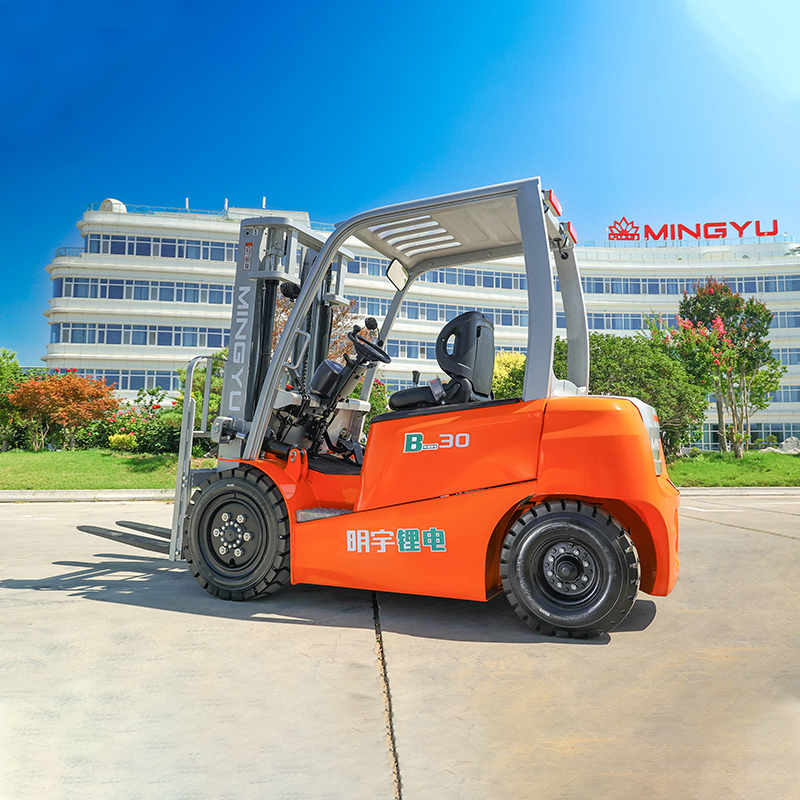
Electric forklifts have revolutionized the material handling industry, offering a sustainable and efficient solution for moving heavy loads. These powerful machines are increasingly becoming the preferred choice for businesses across various sectors, from manufacturing and warehousing to logistics and transportation.
Unlike traditional gasoline or diesel-powered forklifts, electric forklifts rely on battery power to operate. This fundamental difference results in several key advantages, including reduced emissions, lower noise levels, and lower operating costs. By eliminating harmful exhaust fumes and minimizing noise pollution, electric forklifts contribute to a cleaner and healthier work environment.
Moreover, electric forklifts offer superior maneuverability and precise control, enhancing productivity and safety. Their compact design and zero-emission operation make them ideal for indoor applications, where air quality and noise restrictions are stringent. Additionally, the absence of a complex engine and transmission system simplifies maintenance and reduces downtime.
However, a common concern among users is whether electric forklifts can withstand the rigors of outdoor operation, particularly in rainy conditions. While electric forklifts are generally designed for indoor use, many modern models are equipped with features that allow them to operate safely in light rain or damp environments.
In this article, we will delve into the factors that influence the performance of electric forklifts in wet conditions, the precautions to take, and the future trends that may further enhance their capabilities in rainy environments.

To assess the suitability of an electric forklift for use in wet conditions, it's crucial to understand its Ingress Protection (IP) rating. This international standard classifies the degree of protection provided against solid objects and water.
An IP rating is typically represented by two digits:
· First Digit: Indicates the level of protection against solid objects, such as dust and dirt.
· Second Digit: Indicates the level of protection against water.
For example, an IP67 rating means the device is dust-tight and can withstand immersion in water up to a certain depth for a specified duration.
Common IP Ratings for Electric Forklifts:
· IPX4: Protected against water splashing from all directions.
· IPX5: Protected against water jets from all directions.
· IPX6: Protected against powerful water jets from all directions.
· IPX7: Protected against immersion in water up to a certain depth for a specified duration.
While higher IP ratings generally indicate better water resistance, it's important to note that not all components of an electric forklift may have the same IP rating. For instance, the main control unit might have a higher IP rating than the battery or motor.
When selecting an electric forklift for use in wet conditions, it's essential to consider the specific IP ratings of its key components and the severity of the expected weather conditions.
Several factors can influence the performance and longevity of an electric forklift in wet conditions:
· Water Ingress: Water ingress into the battery compartment can lead to short circuits, reduced battery life, and potential fire hazards. Manufacturers typically employ sealing techniques and drainage systems to minimize water intrusion.
· Battery Cooling: Effective battery cooling is crucial to prevent overheating, especially in demanding applications. Rain can interfere with the cooling process, potentially leading to reduced performance and shortened battery life.

· Insulation: The insulation of electric motors must be robust enough to withstand exposure to moisture. Water ingress can degrade insulation, leading to electrical faults and motor failure.
· Cooling: Similar to batteries, electric motors rely on effective cooling to maintain optimal performance. Rain can hinder the cooling process, potentially affecting motor efficiency and lifespan.
· Water Resistance: The control systems, including electronic components and wiring harnesses, must be adequately protected against water ingress. Manufacturers often use waterproof seals and enclosures to safeguard these critical components.
· Corrosion: Exposure to moisture can accelerate corrosion, particularly in metal components. Regular maintenance and cleaning can help mitigate corrosion and prolong the life of the control system.
By understanding these factors and selecting a forklift with appropriate IP ratings, users can minimize the risks associated with operating electric forklifts in wet conditions.
Operating electric forklifts in rainy conditions presents unique safety challenges that must be carefully addressed:
· Tire Grip: Wet surfaces significantly reduce tire traction, making it easier for the forklift to slip or skid, especially when turning or braking.
· Hydroplaning: In extreme conditions, the tires may lose contact with the ground, leading to hydroplaning. This can result in loss of control and potential accidents.
· Rain Streaks: Rain can obscure the operator's vision, making it difficult to see obstacles and other vehicles.
· Headlights and Windshield Wipers: Ensure that the forklift's headlights and windshield wipers are in good working condition to improve visibility.
· Protective Gear: Operators should wear appropriate safety gear, including waterproof clothing and footwear, to protect themselves from the elements.
· Safe Operating Practices: Adhere to safe operating practices, such as reducing speed, increasing following distance, and avoiding sudden maneuvers.
By understanding and mitigating these risks, operators can safely use electric forklifts in rainy conditions.
To ensure the safe and efficient operation of electric forklifts in wet conditions, consider the following best practices:
· IP Rating: Select a forklift with a high IP rating, such as IPX5 or IPX6, to withstand exposure to water jets from all directions.
· Tire Type: Consider using tires with specialized tread patterns designed for wet conditions to improve traction.
· Visual Inspection: Check for any signs of water damage, corrosion, or loose connections.
· Battery: Ensure the battery is fully charged and free of any leaks or damage.
· Control Systems: Verify that all control systems are functioning properly and are protected from water ingress.
· Reduced Speed: Reduce speed to account for reduced traction and impaired visibility.
· Gentle Maneuvers: Avoid sudden acceleration, braking, or turning, as these can lead to loss of control.
· Increased Following Distance: Maintain a safe distance from other vehicles to allow for increased stopping distances.
· Cleaning: Regularly clean the forklift to remove dirt, debris, and salt, which can accelerate corrosion.
· Lubrication: Lubricate moving parts according to the manufacturer's recommendations to prevent rust and wear.
· Battery Maintenance: Regularly inspect and maintain the battery to ensure optimal performance and longevity.
By following these best practices, you can minimize the risks associated with operating electric forklifts in wet conditions and maximize their productivity.
In conclusion, while electric forklifts are primarily designed for indoor use, modern technology and robust construction have enabled them to operate safely and efficiently in wet conditions. By understanding the factors that affect their performance, adhering to safety guidelines, and implementing proper maintenance practices, businesses can maximize the benefits of electric forklifts, even in challenging weather conditions.
As technology continues to advance, we can expect to see further improvements in the water resistance and durability of electric forklifts. Future innovations may include advanced sealing techniques, corrosion-resistant materials, and intelligent systems that can automatically adjust performance based on weather conditions.
By embracing these advancements and prioritizing safety, businesses can harness the power of electric forklifts to enhance productivity, reduce environmental impact, and create a safer workplace.
Name: selena
Mobile:+86-13176910558
Tel:+86-0535-2090977
Whatsapp:8613181602336
Email:vip@mingyuforklift.com
Add:Xiaqiu Town, Laizhou, Yantai City, Shandong Province, China